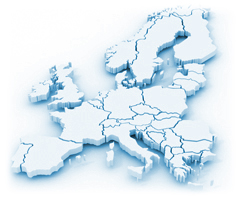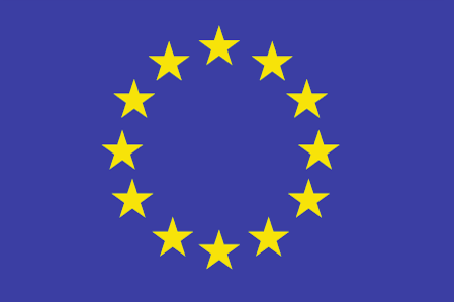For too many pupils, science at school remains abstract and most of them do not understand the connection between the fundamental scientific knowledge they learn at school and the many technological innovations they see around them. In this perspective it is hardly surprising that young people do not choose for STEM (science technology, engineering and mathematics) for their studies and careers, especially in Europe .
It’s this project’s hypothesis that the well-known low motivation of students for science is strongly related to the poor view boys and girls get at school on scientific research and especially its high technology applications. However, we cannot blame teachers for not giving pupils at school a broader and deeper perspective on the modern field of science and technology and the lively careers that lay open for them there.
The booming nanoscience rests upon the synthesis of modern physical, chemical and biological insights. Precisely the application of these insights at the molecular nanoscale level, changes our present and future approaches to manufacturing, electronics, information and communications technology, making previous technology rapidly redundant. Scientists across the globe have focused on theoretical simulation of electronic, optoelectronic, logic and memory devices in the nano dimension. But many ideas are still waiting for application like quantum computing or other ideas which could not even thought about before.
Modern science and nanotechnology has the potential to even become a more significant revolutionary force for business than the industrial revolution or the information technology revolution.
But we should realise that, without help, it is hardly possible for teachers to follow these fast developing fields, leave alone the more complex technological applications that find their way to products and new enterprises. And even if they could manage to follow these scientific and technological developments, it is far from evident to bring these new and complex matters in a pedagogical feasible way in class. Even textbooks and methods are not able to open this world to them because there is a lack of pedagogical experience in teaching these modern fields.
The lack of motivation for STEM-careers is also strongly related to gender imbalance in science and technology careers in Europe. Unrecognized talent and lack of interest of girls for science and technology contributes substantially to the problem of the too small numbers of young people choosing for science and technology careers. It is well known that the interest of children for science and technology at school fades with age, especially for girls. Why? The report of The Institute of Physics notes that girls experience school physics as too abstract, but they become more interested if they see societal implications and impact and if they can understand that science is something done by people.
Precisely this will be done in this project: it will provide teachers with tools and a pedagogy to connect pupils with the ‘life of real-life’ researchers and so raise the societal visibility of this kind of life, which according to the mentioned study has a positive impact on the motivation of girls for STEM-careers.
The Quantum Spinoff project will:
a) implement authentic inquiry activities for pupils as a working example where they
i. work with researchers around papers and patents;
ii. interact with researchers who develop applications based on scientific results;
iii. interact with high-tech entrepreneurs doing business based on these applications.
b) develop and implement a teacher training method based on this working example.
To achieve this, the project brings the world of cutting-edge research and entrepreneurship together with the world of science education. In this quite unusual consortium you’ll find research groups on science education and teacher educators together with high-tech research labs in every participating country.
AIMS AND OBJECTIVES OF QUANTUM SPINOFF
1. To create a community of stakeholders from the school world (science teachers, teacher educators and trainees, school directors, pupils) and from the ‘outside world’ of nano research labs and high-tech companies (researchers and entrepreneurs), with the common goal of bringing youth in contact with nano research and high-tech entrepreneurship. The project wants to reach at least 100 science teachers, 1000 pupils, 80 schools, 100 teacher educators, 160 teacher students, 24 researchers, 4 nano research labs, 20 SME’s and entrepreneurs, 40 policy makers.
2. To develop an innovative pedagogical method and an inquiry learning package to bring pupils in direct contact with high-tech research and entrepreneurship, and to test and improve this method with schools and researchers of the partner countries in a try-out of one school year. Pedagogical approach and learning material will be designed to encourage and nurture pupils' creativity, stimulate their sense of initiative and develop entrepreneurial skills, by inspiring them to create a socially relevant valorisation of a scientific paper or patent in direct interaction with researchers. This approach will also develop competitiveness in youth with the Quantum Spin-Off Prize, a science&technology contest beyond subject boundaries and traditional assessment: teams of pupils present their results as real researchers and scientific and technological insights, sense for business and societal implications all come into play. By doing all this, this project promotes new forms of teaching and learning in science and technology: connecting schools to researchers and inquiry based science teaching.
3. To develop a teacher training method, reflected in teacher guidelines for the learning package, allowing science teachers to: (a) work with the new pedagogical approach and learning package; (b) take initiative and connect with high-tech research and entrepreneurship; (c) correctly support the inquiry learning process of their pupils. To apply and try-out the teacher training method in two national teacher training events in all partner countries and in two European summer schools, each including a teacher contest. To implement this teacher training method in the partner teacher education departments. By training science teachers, broadening their perspective on science, technology and high-tech entrepreneurship, by stimulating them to make contact with the world of research and to work in an inquiry manner in the science class, this project strives for the high competence of European science teachers and develops teachers' collaborative competence with the outside world of research and entrepreneurship in the high-tech sector.
4. To stimulate and facilitate collaboration and networking of schools with high-tech research centres and companies, by making the method, the learning package with teacher guidelines and the lists of contacts available via the project webportal. By doing this, this project develops a model for partnership and networking between schools and the world of work in the science and technology area.
5. To disseminate the project concept and results in Europe in several ways, in particular by making a project film that will be available on the internet at the end of project.
6. To tackle gender stereotypes at school level, by applying an affirmative action in the selection of participating researchers and teachers and thus providing female role models in science and technology.


